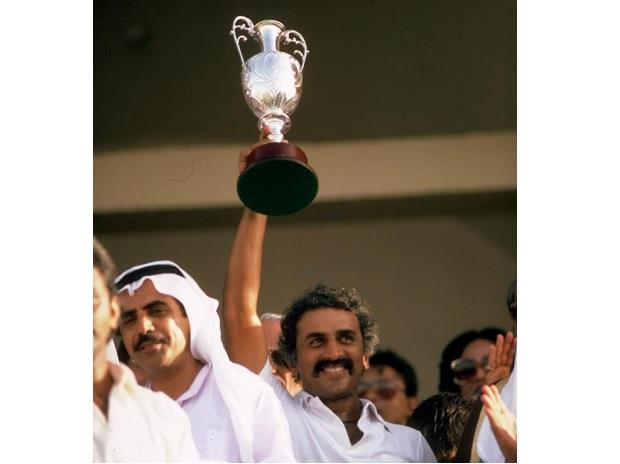The 1984 Asia Cup Sharjah was a historic cricket tournament that did more than just showcase competitive cricket—it brought Indians and Pakistanis together in a way few events had before. Cricket, in this instance, became a bridge that transcended political tensions, uniting fans through a shared love for the game.
The Birth of the Asia Cup
In 1983, the Asian Cricket Council (ACC) was formed with the vision of promoting and developing the game across Asia. The following year, the first Asia Cup was organized in Sharjah, a city that would later become synonymous with cricketing history. The tournament featured three teams: India, Pakistan, and Sri Lanka, and was played in a round-robin format.
Despite the intense rivalry between India and Pakistan, the tournament was conducted in a spirit of sportsmanship and camaraderie. The Sharjah Cricket Stadium, newly established at the time, became the neutral ground where these nations could compete, setting aside their differences for the love of the game.

A Shared Passion for Cricket
The UAE, home to a significant expatriate population from both India and Pakistan, witnessed an unprecedented turnout during the matches. Fans from both nations filled the stands, waving flags and cheering passionately for their respective teams. The atmosphere was electric, with both sets of supporters displaying immense pride and enthusiasm.
This shared passion for cricket transcended national boundaries. Indians and Pakistanis, often divided by political tensions, found common ground in their love for the sport. Conversations between fans, regardless of their nationality, revolved around cricket strategies, player performances, and memorable moments, fostering a sense of unity and mutual respect.

Memorable Moments of Unity

One of the most iconic moments of the tournament was the final match between India and Pakistan on April 13, 1984. India set a target of 189 runs, and Pakistan, in their chase, were bowled out for 134 runs, handing India a 54-run victory. Despite the competitive nature of the game, both sets of fans applauded good performances from players on either side, showcasing the respect they held for each other’s cricketing prowess.
Off the field, the tournament also facilitated interactions between players and fans from both nations. Indian and Pakistani cricketers shared conversations, signed autographs, and engaged with fans, further blurring the lines of rivalry and promoting a message of peace and unity.
The Role of the UAE
The UAE’s role in hosting the Asia Cup was pivotal. The country’s leadership recognized the potential of sports to foster unity and took proactive steps to ensure the success of the tournament. The Sharjah Cricket Stadium, under the guidance of officials like Mazhar Khan, was transformed into a world-class venue that could accommodate the growing number of spectators.
Moreover, the UAE’s neutral stance in regional politics provided a safe and welcoming environment for fans and players from both India and Pakistan. This neutrality allowed the focus to remain solely on the sport, enabling the Asia Cup to serve as a platform for unity rather than division.
Lasting Impact
The success of the 1984 Asia Cup had a lasting impact on cricketing relations between India and Pakistan. It demonstrated that sports could serve as a bridge between nations, fostering understanding and camaraderie. The tournament set a precedent for future encounters between the two nations, emphasizing the importance of sportsmanship and mutual respect.
In the years that followed, Sharjah continued to host numerous cricketing events, with India and Pakistan often facing each other on its hallowed grounds. Each match was a reminder of the unity that the 1984 Asia Cup had sparked, with fans from both nations coming together to celebrate the sport they cherished.
Conclusion
The 1984 Asia Cup in Sharjah was more than just a cricket tournament; it was a celebration of unity, sportsmanship, and the shared love for the game. In a region often marked by political tensions, the tournament showcased how cricket could bring people together, transcending national boundaries and fostering a spirit of camaraderie. As we look back on that historic event, it serves as a reminder of the power of sports to unite and inspire, leaving a legacy that continues to resonate today.
Do follow UAE Stories on Instagram
Read Next – Oman Launches Construction Digitisation Drive to Boost Real Estate















